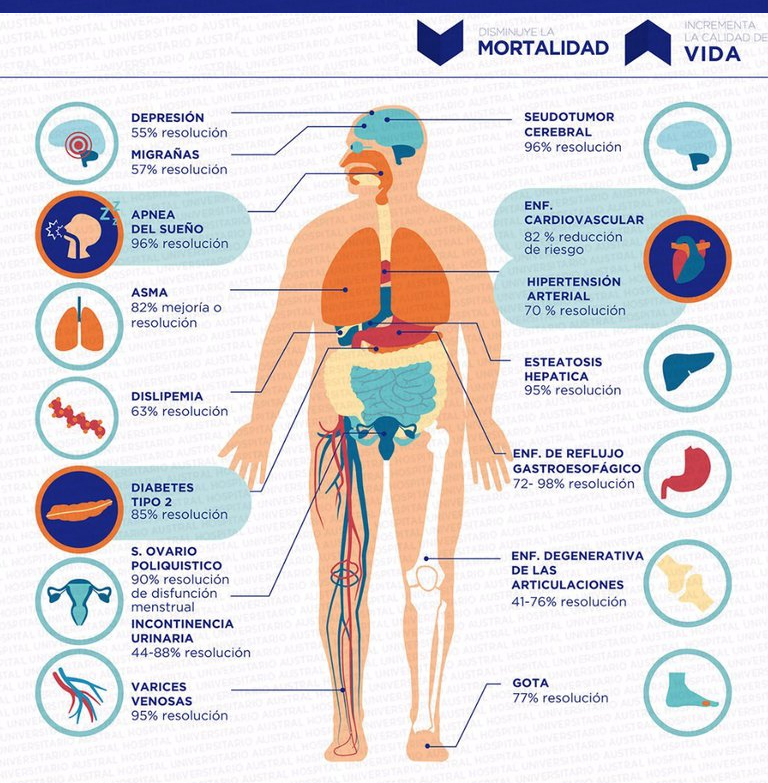Gastrointestinal surgery provides the most substantial and sustainable weight loss in obese individuals. The procedures are collectively called bariatric (from the Greek words baros [weight] and iatrikos [medicine]) or metabolic (when cardiometabolic risk reduction surgery is the intention) and are among the most common gastrointestinal procedures.
Although bariatric and metabolic surgery procedures are used for the treatment of obesity and diabetes, it is important to make a distinction between bariatric surgery and metabolic surgery. Bariatric surgery is defined as a procedure that is performed for weight control, while metabolic surgery is defined as gastrointestinal surgery performed with the goal of treating diabetes and metabolic syndrome. (45)
Metabolic syndrome is a group of disorders that occur at the same time and increase the risk of heart disease, stroke, and type 2 diabetes. These disorders include increased blood pressure, high blood sugar levels, excess body fat around waist and abnormal levels of cholesterol or triglycerides.
